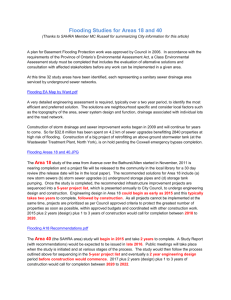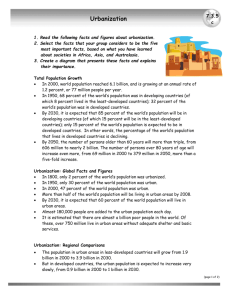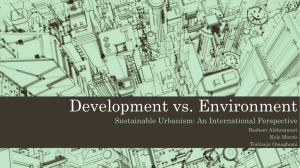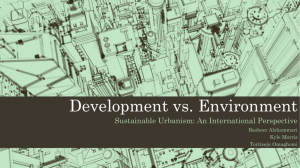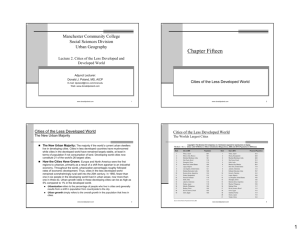Urban hydrology - Cal State LA
advertisement
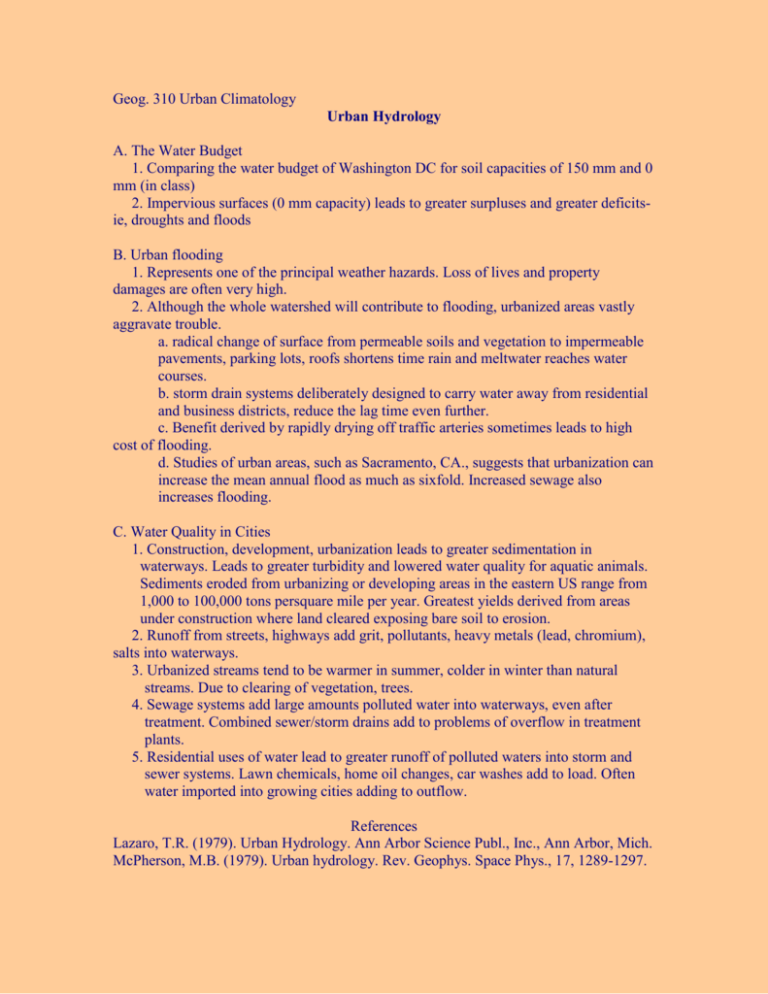
Geog. 310 Urban Climatology Urban Hydrology A. The Water Budget 1. Comparing the water budget of Washington DC for soil capacities of 150 mm and 0 mm (in class) 2. Impervious surfaces (0 mm capacity) leads to greater surpluses and greater deficitsie, droughts and floods B. Urban flooding 1. Represents one of the principal weather hazards. Loss of lives and property damages are often very high. 2. Although the whole watershed will contribute to flooding, urbanized areas vastly aggravate trouble. a. radical change of surface from permeable soils and vegetation to impermeable pavements, parking lots, roofs shortens time rain and meltwater reaches water courses. b. storm drain systems deliberately designed to carry water away from residential and business districts, reduce the lag time even further. c. Benefit derived by rapidly drying off traffic arteries sometimes leads to high cost of flooding. d. Studies of urban areas, such as Sacramento, CA., suggests that urbanization can increase the mean annual flood as much as sixfold. Increased sewage also increases flooding. C. Water Quality in Cities 1. Construction, development, urbanization leads to greater sedimentation in waterways. Leads to greater turbidity and lowered water quality for aquatic animals. Sediments eroded from urbanizing or developing areas in the eastern US range from 1,000 to 100,000 tons persquare mile per year. Greatest yields derived from areas under construction where land cleared exposing bare soil to erosion. 2. Runoff from streets, highways add grit, pollutants, heavy metals (lead, chromium), salts into waterways. 3. Urbanized streams tend to be warmer in summer, colder in winter than natural streams. Due to clearing of vegetation, trees. 4. Sewage systems add large amounts polluted water into waterways, even after treatment. Combined sewer/storm drains add to problems of overflow in treatment plants. 5. Residential uses of water lead to greater runoff of polluted waters into storm and sewer systems. Lawn chemicals, home oil changes, car washes add to load. Often water imported into growing cities adding to outflow. References Lazaro, T.R. (1979). Urban Hydrology. Ann Arbor Science Publ., Inc., Ann Arbor, Mich. McPherson, M.B. (1979). Urban hydrology. Rev. Geophys. Space Phys., 17, 1289-1297. Schaake, J.C., Jr. (1972). “Water and the city,” in Detwyler, T.R. and Marcus, G.M. (eds) Urbanization and Environment. Belmont, CA: Duxbury. Stall, J.B., Terstriep, M.L. and Huff, F.A. (1970). Some effects of urbanization on floods. ASCE Natl. Water Res. Eng. Mtg., Memphis, Jan. 26-30.


